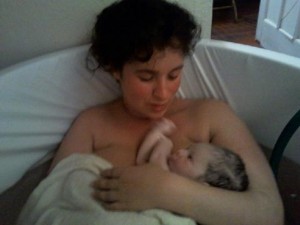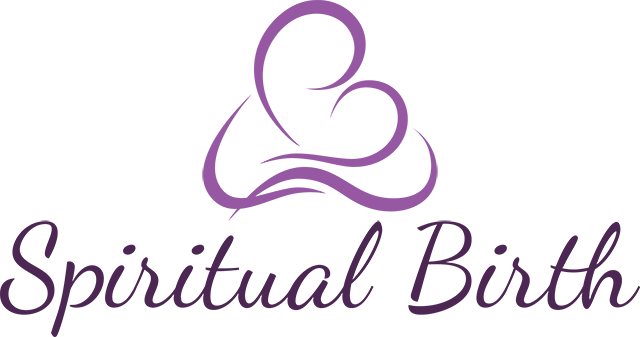It is 04h57 and I am waiting for a baby to be born. The mother has laboured all night: gently, sweetly, silently, with the occasional musical moan. We waited until her baby was ready to be born

Had the mother been in hospital surrounded by medical personnel, this would have been viewed as a prolonged second stage. Notes would have been written in her folder “uncooperative mother”, “failure to progress”, “delayed second stage”. Her legs would have been yanked and tied into stirrups while she lay on her back in an attempted semi-fowlers, with the shoulders slightly raised. And then the instruction would begin : Push”, Push in your bottom”, Hold your breathe and bear down”, “Push harder” etc, until the voices and effort reached a crescendo and finally a small coin of vertex would force its way through the now taught labial folds.
Dr Richard Moskovitch describes the timing of birth so beautifully in his book Homeopathic Medicines for Pregnancy and Childbirth: “Probably the commonest and most important second stage complication is simple ‘failure to progress’, resulting in forceps or vacuum extraction or caesarian section, and traceable at least in part to two WHOLLY ARBITRARY policies:
1) that women be instructed to push as soon as the cervix is fully dilated; and
2) that the baby not be allowed to remain in the birth canal for more than two hours. Devised as an administrative and legal solution to the traffic problems of a busy maternity hospital service, these bureaucratic rules ignore wide individual variations in how women actually give birth when permitted to do so in their own way.”
Firstly, full dilatation is often followed by a rest period of several hours, when the contractions recede and the uterus becomes more refractory to stimulation. when contractions resume they may be characterized by longer intervals. In other words, while during active labour the contractions are generally 5 minutes apart, they may become spaced at intervals of 10-20 minutes apart. Many mothers are actually sleepy or hungry at this point, in need of recharging their ‘battery’ so to speak.As long as the fetal heart rate remains stable and reactive, there is no cause for concern and no need to rush the mother. It makes no sense to pressurize women to continue without respite when the main reason for attending a labour or birth is to meet the mother and the baby’s needs at every stage. Unfortunately, by entering a hospital premises and submitting to hospital protocols, one is inadvertently surrendering the right to basic human needs during labour. Legal liabilities and logistic priorities take precedence over personal clinical individual assessment and responsiveness.
Secondly, Moskovitch says “many women never experience any discernible urge to push or bear down prior to being expected to summon an instinctive act for which their own physical experience offers no clear or compelling directions.” The question of when to push is answered by the mother’s knowing when to push, as a sequel to involuntary and automatic bearing down sensations. Until that point, a mother should be allowed to follow her star, whether it be to sleep, eat, move, lay about in warm water, be quiet, engage socially, laugh or cry. It is the mother who should signal the need and urge to ‘push’ as she discovers what the strong sensations in her body mean and how to use them productively.
It is Dr Moskovitch’s experience, as it is mine, that babies can survive quite well in the birth canal for a long period of time, without forced pushing, provided the baby’s heartbeat is monitored regularly and there are no signs of distress. It is the many hours of useless and tedious forced pushing, to meet uniform expectations of how women should give birth, that is not recommended.
I had examined the mother I am attending initially at about 6pm and the cervix had been closed but soft and effacing while contractions were intermittently mild and moderate about 5 minutes apart for more than 12 hours. Caulophyllum was the homeopathic remedy of choice and labour progressed swiftly thereafter, so that by midnight, signs of transition where evident: desperate discomfort, pleading to be relieved of the ordeal, sensations of pressure in the pelvic region, the need to urinate and the urge to have a bowel action. We swayed, sat, lay and moved. And then at about 2am all activity seemed to cease and the mother drank fluids and rested soporifically. I waited and remained quiet, listening to the baby’s regular heartbeat intermittently. Two and a half hours later, the atmosphere changed, the mother entered the bath and amid loud vocalizations engaged in obvious bodily efforts to bear down and give birth. Within half an hour of expulsive efforts, a beautiful baby boy emerged gently into the water, all 4100gms of him, and as I lifted him to the surface of the water to breathe it seemed as if this birth was an act of extraordinary grace.
Once again I am humbled, marveling at the ease of nature’s plan when it is executed well, glad that I kept my own anxieties at bay, refrained from interfering and followed the job description of a homebirth midwife as detailed by Moskovitch: “Simply to be there for the woman and her family, noticing much, doing little and behaving as unobtrusively as possible

This really is a beautiful article and rings true to so many of the hospital births i have seen…. unfortunately it is all on hospital time… until some of us have the strength to stand up and change things!!! xx
Too bad I didn’t meet you a couple of years before I did! At least I can pass along to my daughter all the things I learned too late.
So beautiful. When I read this I wanted to cry. Something inside me resonated and said, “Yes, this is right. This is the way it is meant to be.” Congratulations to the mom. What a beautiful landing earthside for the baby!
I think these “threats” need to cease……this causes extra adrenaline to be produced as the mother and baby “feel” stressed. No wonder unnecessary interventions are not uncommon when laboring mothers are being threatened if they don’t “act” in a specified period of time. It’s downright disrespectful.
Labour is an involuntary process. And you are right, when we feel threatened labour may stop in its tracks and not resume until a mother feels relaxed. Unfortunately mothers are not often given time to relax in a hospital setting.
Thank you Marianne for this wonderful article that has touched my heart profoundly. In June 2011, at age 39, I gave birth for the first time. The hospital environment in Spain was far from being peaceful. After 36 hours of labour (during which I got offered an Epidural many times), when our baby was crowning but my contractions ceased – there was talk about a Cesarian. But since our Obstetrician confirmed that the baby´s heart rate was stable, I had a little conversation with our “half-born” baby to let him know that although the outer hospital environment didn´t display it, his dad and I were fully ready inside and outside to receive him in love, and that now would be a good moment to make the final move out. I made a silent agreement with our baby that I would imagine a powerful contraction to assist the transition from the inner to the outer world. Our baby ‘agreed’ and was promptly born (naturally and unmedicated). The experience of our body´s innate wisdom and the strong connection between mum and baby (if not interfered with) has left an imprint on my soul that is beyond what I could have ever imagined… http://birthingwithoutfear.com/
Wonderful article — I’m pinning it up all over. I have heard so many mothers say, “I never got the urge to push so they pulled my baby out with forceps.” Is it possible that this time of rest and recuperation is part of nature’s plan to allow mother and baby to rest after the hard work of first stage, so that they can deliver quickly and easily when the time is right?
Beautiful article.
I planned a homebirth but couldn’t find a midwife to support me and ended up going to the hospital as I didn’t know enough or trust throughout the process. The hospital staff were quite pushy but I was allowed to have a natural birth (although I was given oxytocin as the second stage wasn’t progressing fast enough for them and I was being threatened with a Caesarian if I didn’t give birth within their allotted time span).
So well done for braving the system and giving birth naturally despite intervention Ruth! I am sorry I couldn’t be there.